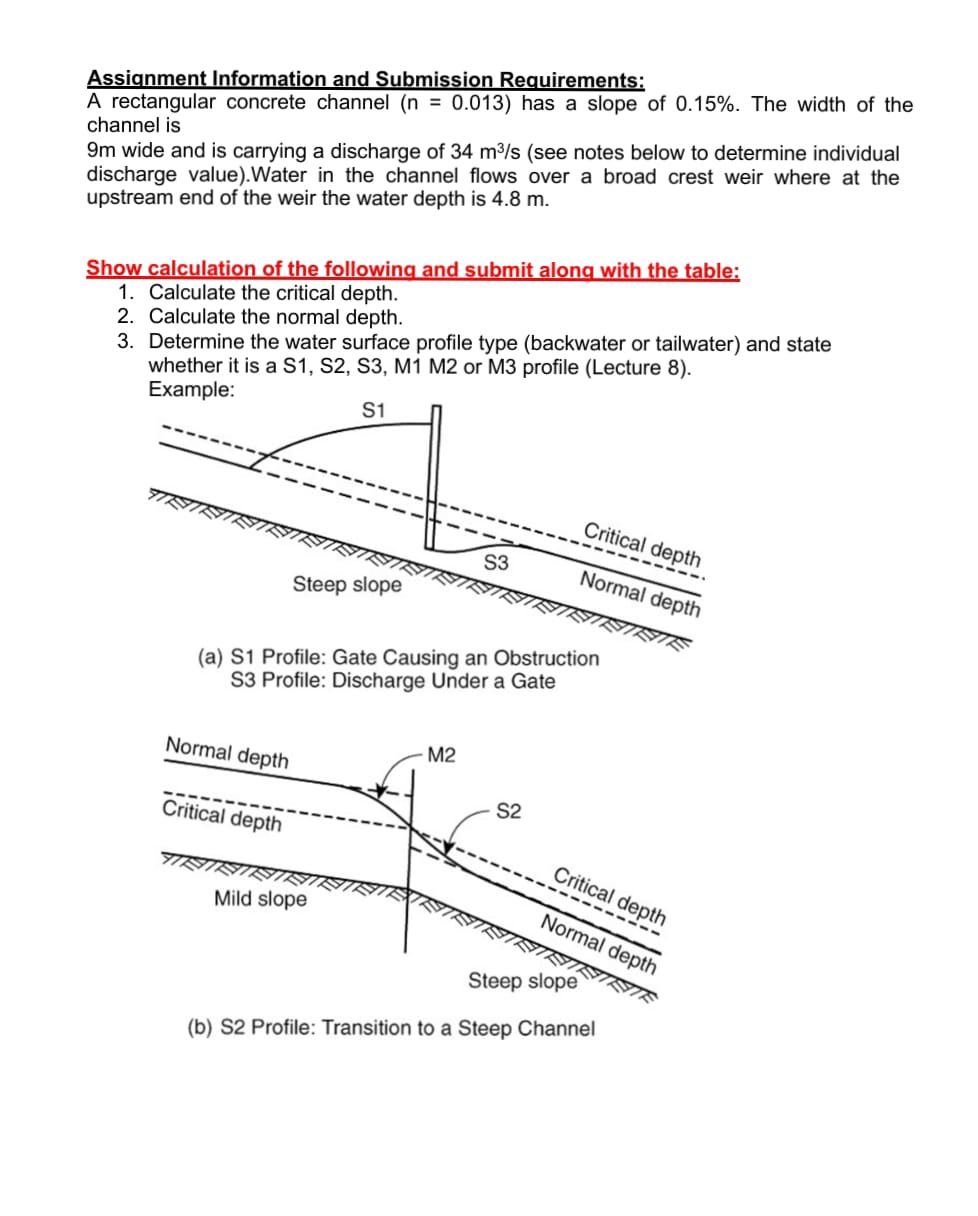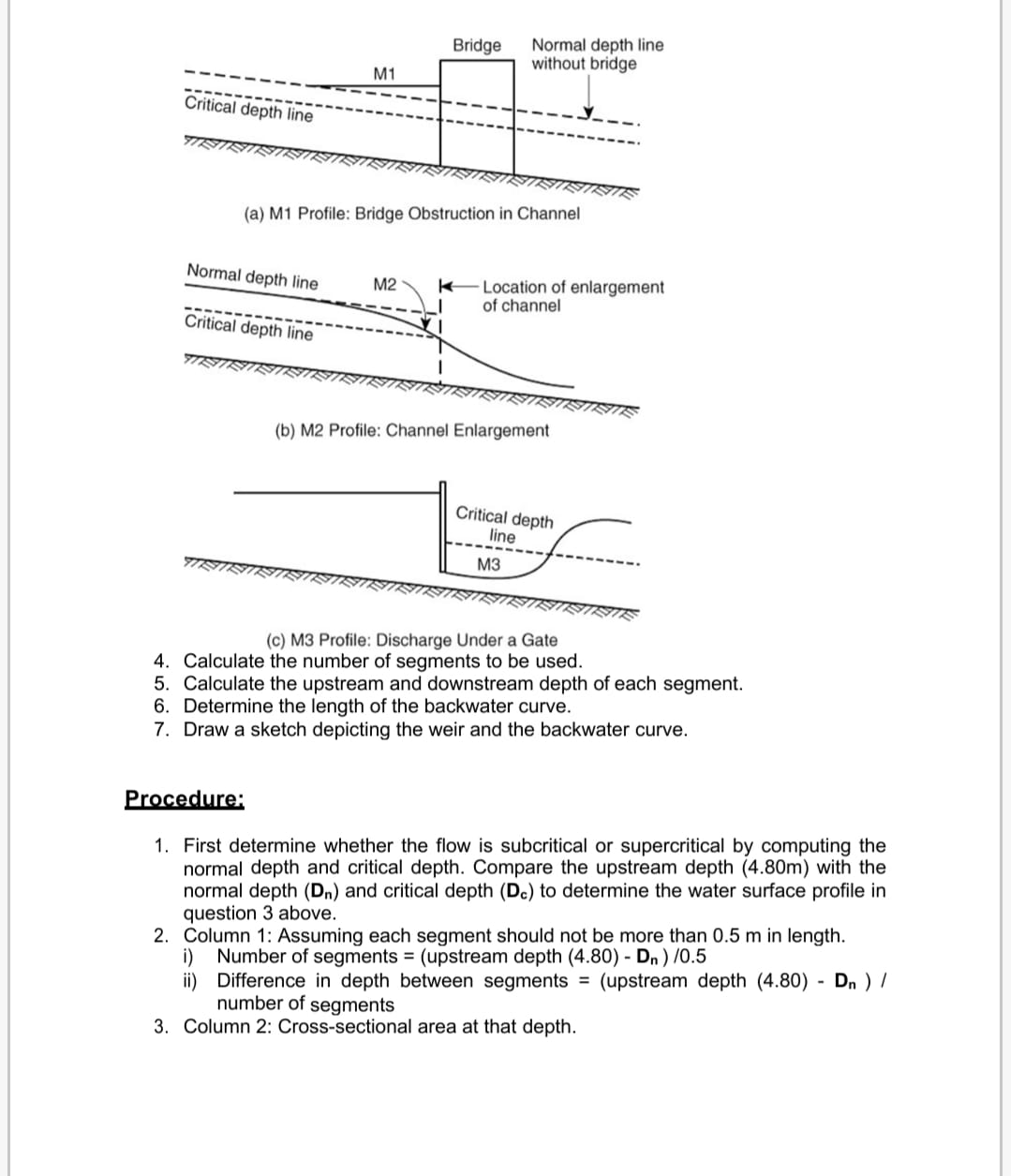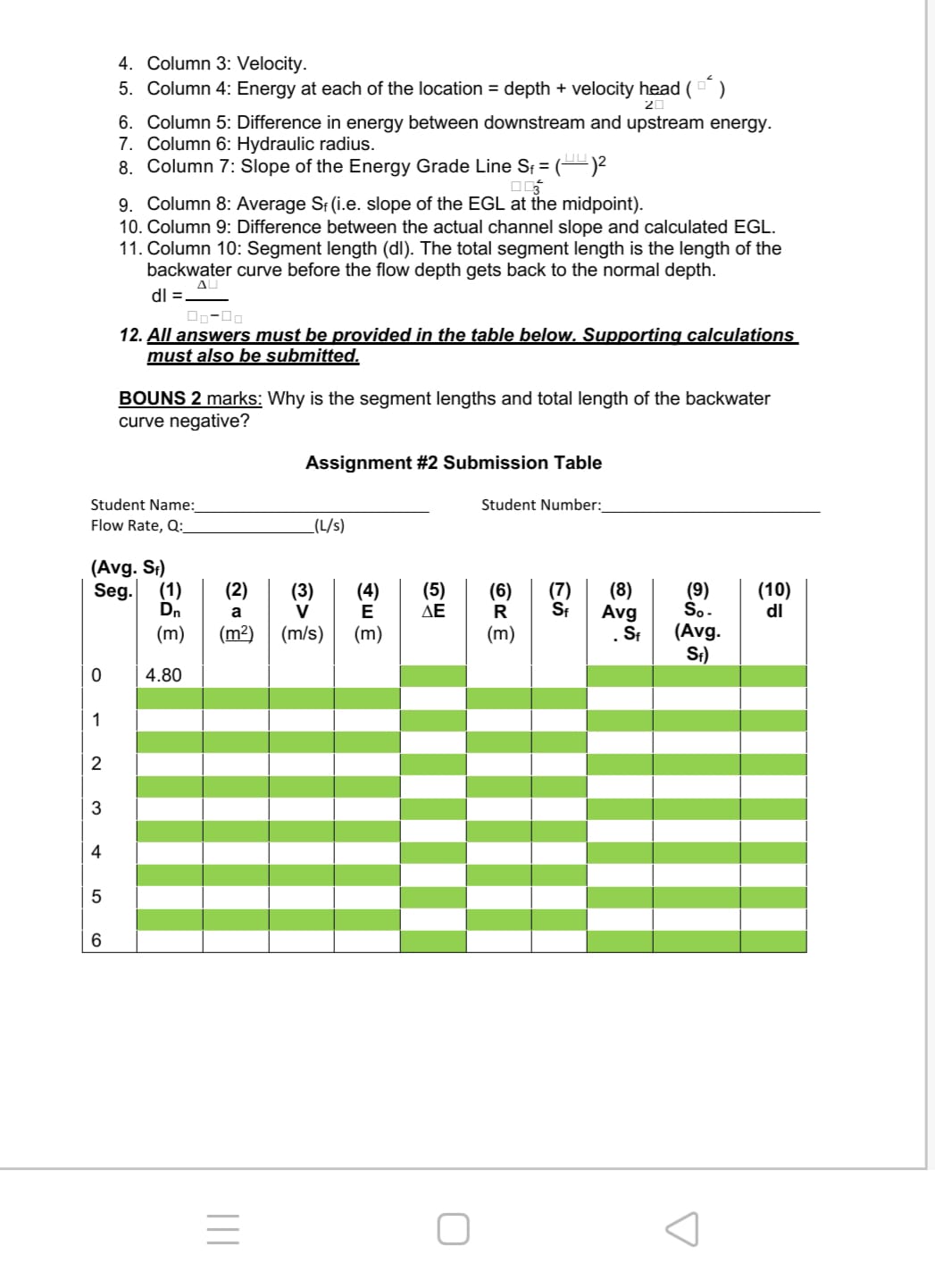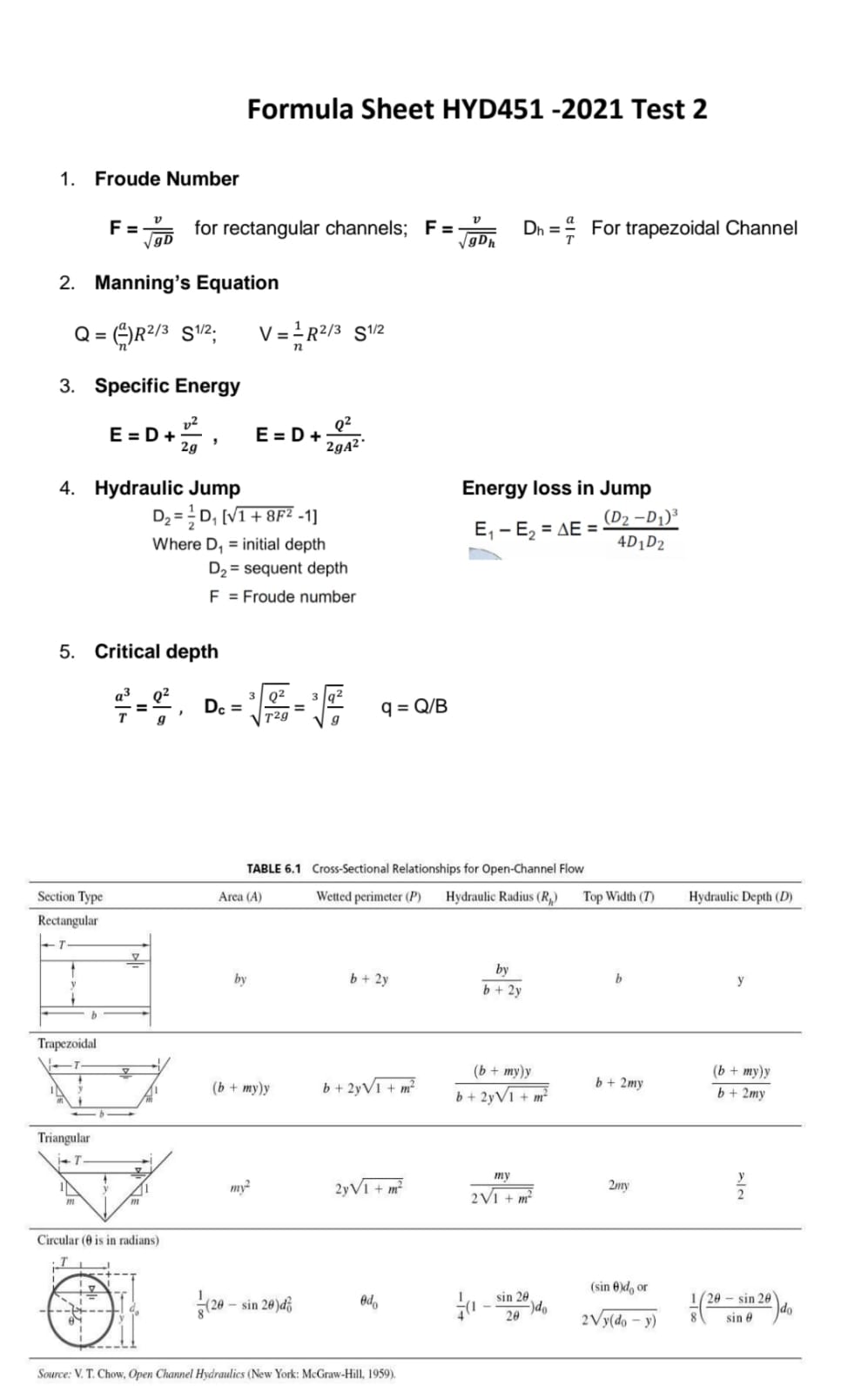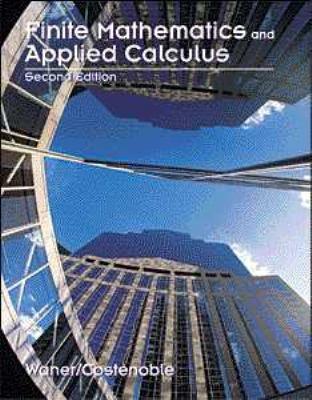please help me with this questions, its urgent
Assignment Information and Submission Requirements: A rectangular concrete channel (n = 0.013) has a slope of 0.15%. The width of the channel is Im wide and is carrying a discharge of 34 m3/s (see notes below to determine individual discharge value).Water in the channel flows over a broad crest weir where at the upstream end of the weir the water depth is 4.8 m. Show calculation of the following and submit along with the table: 1. Calculate the critical depth. 2. Calculate the normal depth. 3. Determine the water surface profile type (backwater or tailwater) and state whether it is a $1, S2, S3, M1 M2 or M3 profile (Lecture 8). Example: S1 Critical depth $3 Steep slope Normal depth SININFINITE (a) S1 Profile: Gate Causing an Obstruction S3 Profile: Discharge Under a Gate Normal depth M2 Critical depth S2 Mild slope Critical depth Normal depth Steep slope NINITE (b) $2 Profile: Transition to a Steep ChannelBridge Normal depth line M1 without bridge Critical depth line (a) M1 Profile: Bridge Obstruction in Channel Normal depth line M2 - Location of enlargement of channel Critical depth line (b) M2 Profile: Channel Enlargement Critical depth line M3 (c) M3 Profile: Discharge Under a Gate 4. Calculate the number of segments to be used. 5. Calculate the upstream and downstream depth of each segment. 6. Determine the length of the backwater curve. 7. Draw a sketch depicting the weir and the backwater curve. Procedure: 1. First determine whether the flow is subcritical or supercritical by computing the normal depth and critical depth. Compare the upstream depth (4.80m) with the normal depth (Dn) and critical depth (Dc) to determine the water surface profile in question 3 above. 2. Column 1: Assuming each segment should not be more than 0.5 m in length. i) Number of segments = (upstream depth (4.80) - D ) /0.5 ii) Difference in depth between segments = (upstream depth (4.80) - D.. ) / number of segments 3. Column 2: Cross-sectional area at that depth.Column 3: Velocity Column 4: Energy at each of the location= depth + velocity head ( ) Column 5: Dierence' In energy between downstream and upstream energy. Column 6. Hydraulic radiue. Column 7: Slope of the Energy Grade Line Sr= (i? F0 90:45:! me Column 8: Average Sp(i. e- slope of the EGL at the midpoint). 10. Column 9: Difference between the actual channel slope and calculated EGL 11. Column 10: Segment length (dl) The total segment length is the length of the backwater curve before the flow depth gets back to the normal depth. BOUNS 2 marks: Why is the segment lengths and total length of the backwater curve negative? Assignment #2 Submission Table Student Name: Student Number: Flow Rate, CL\" (Us) E C]
